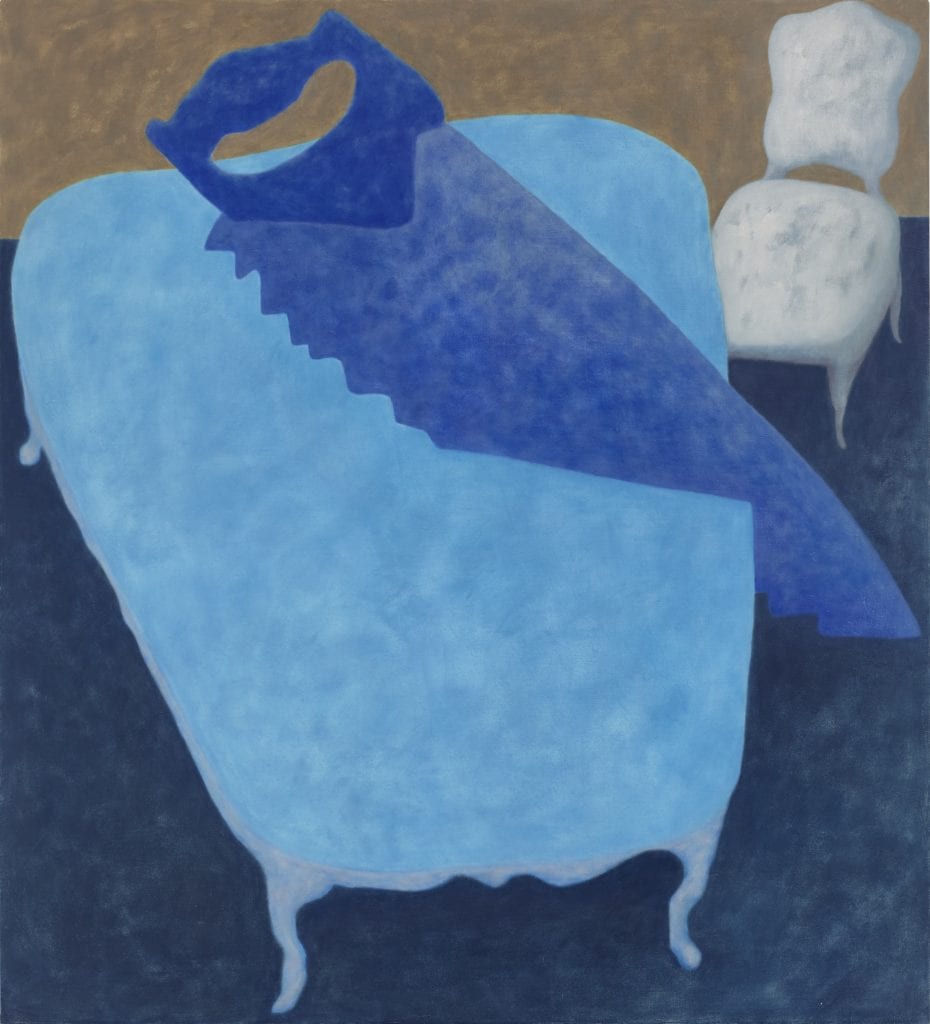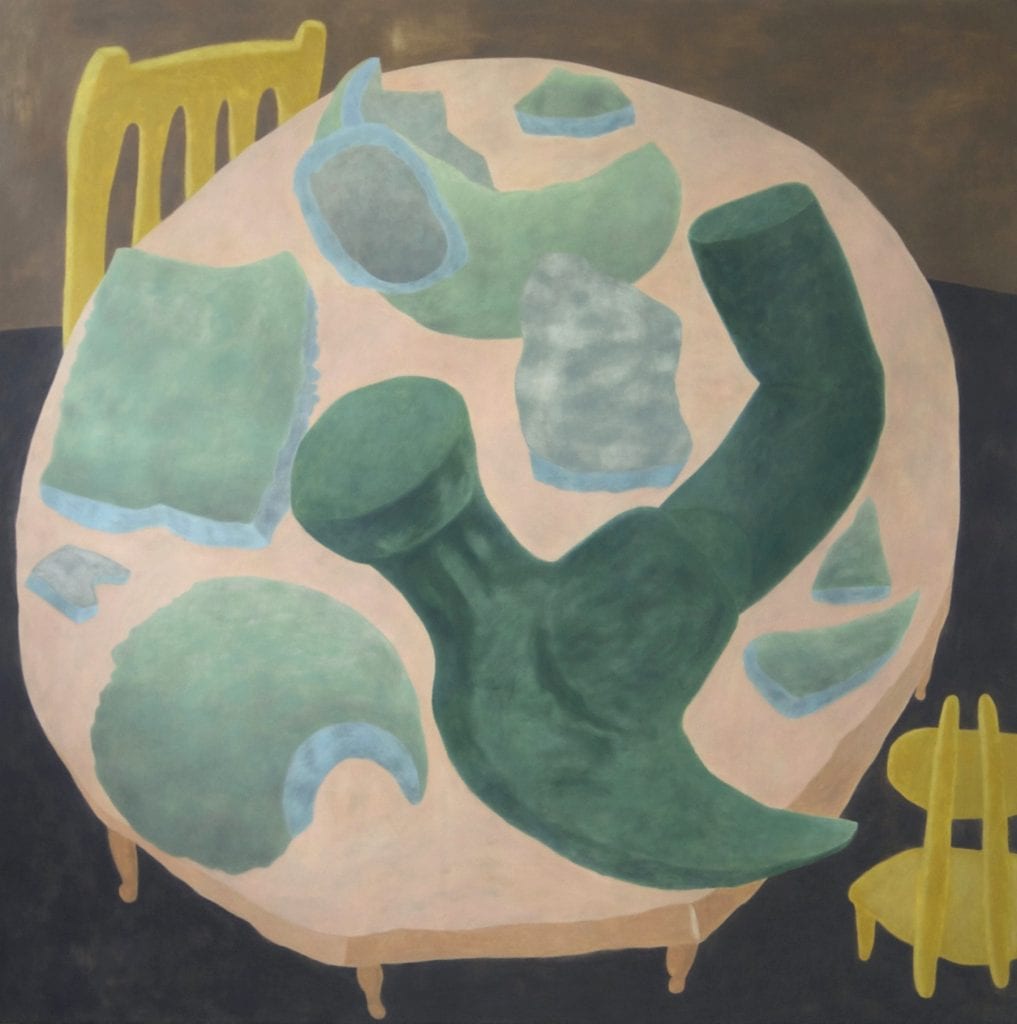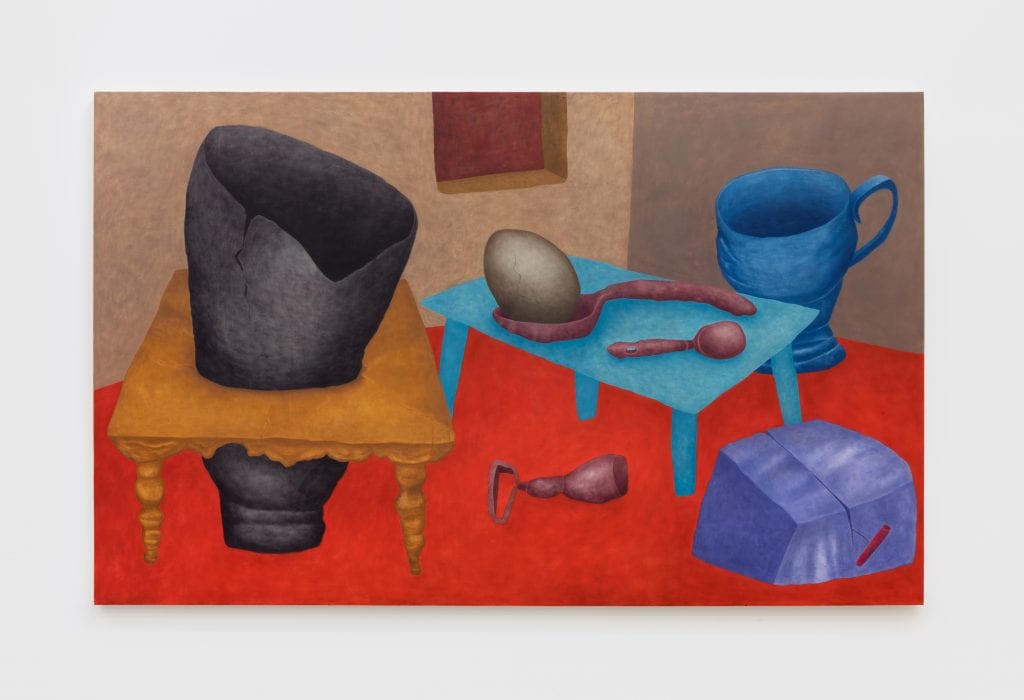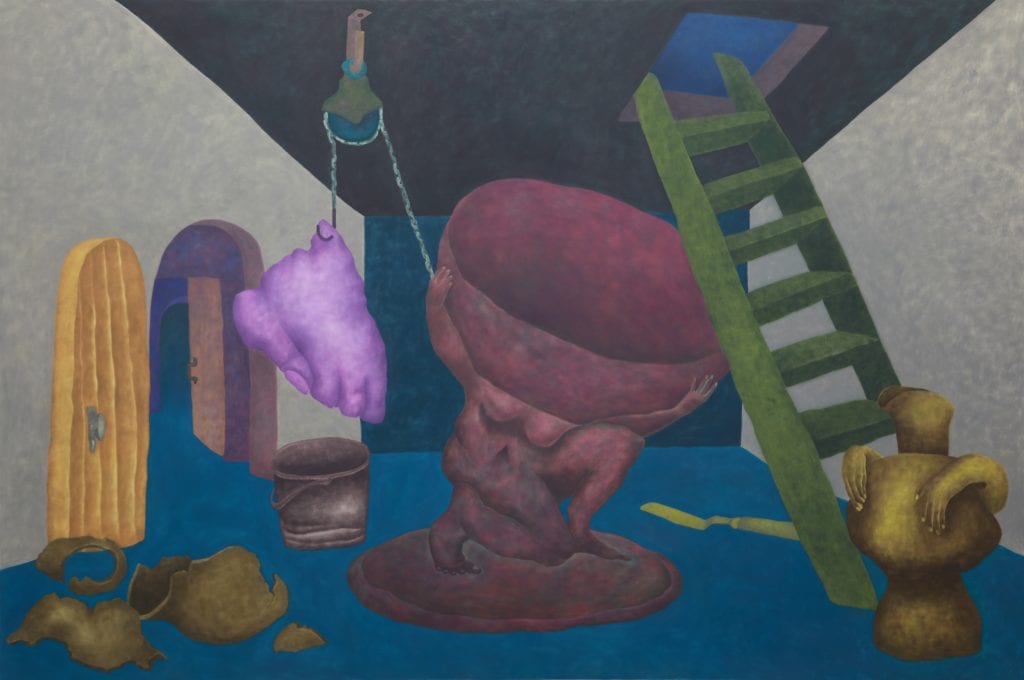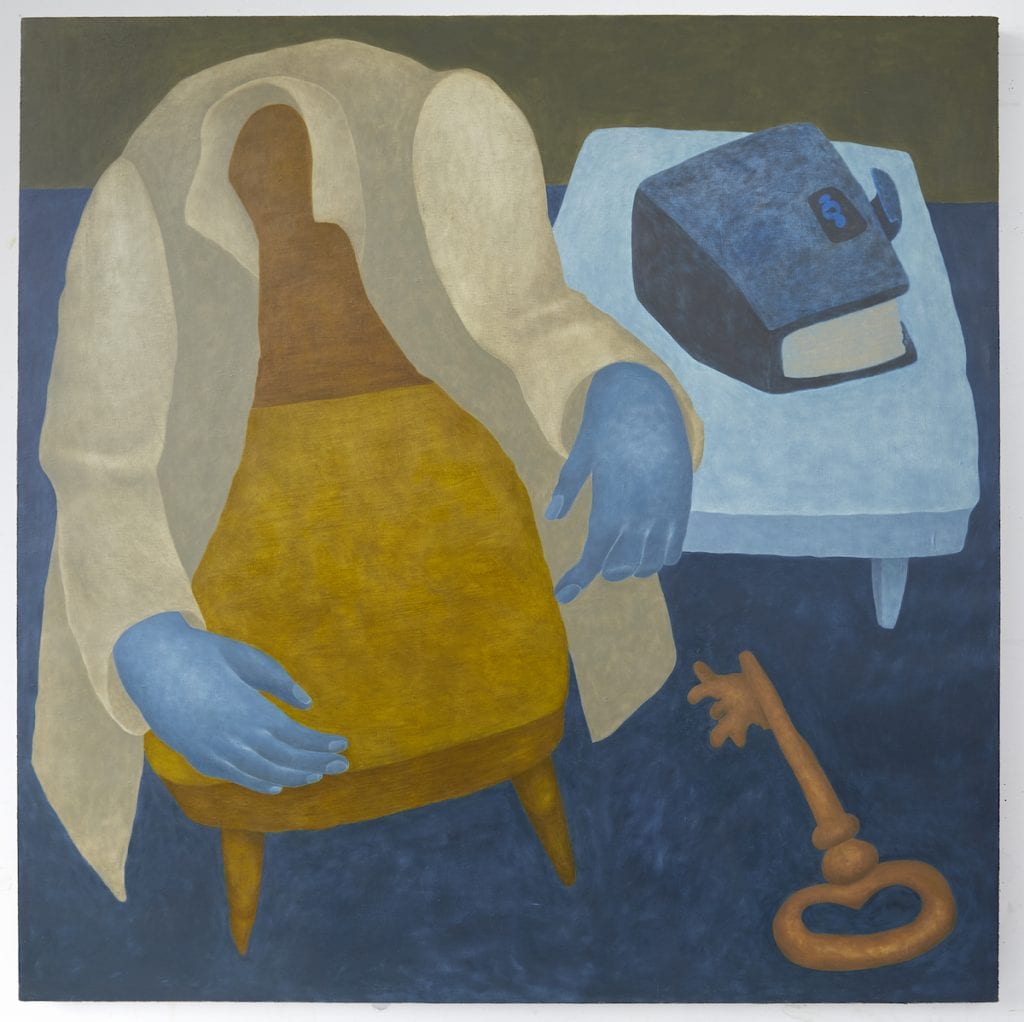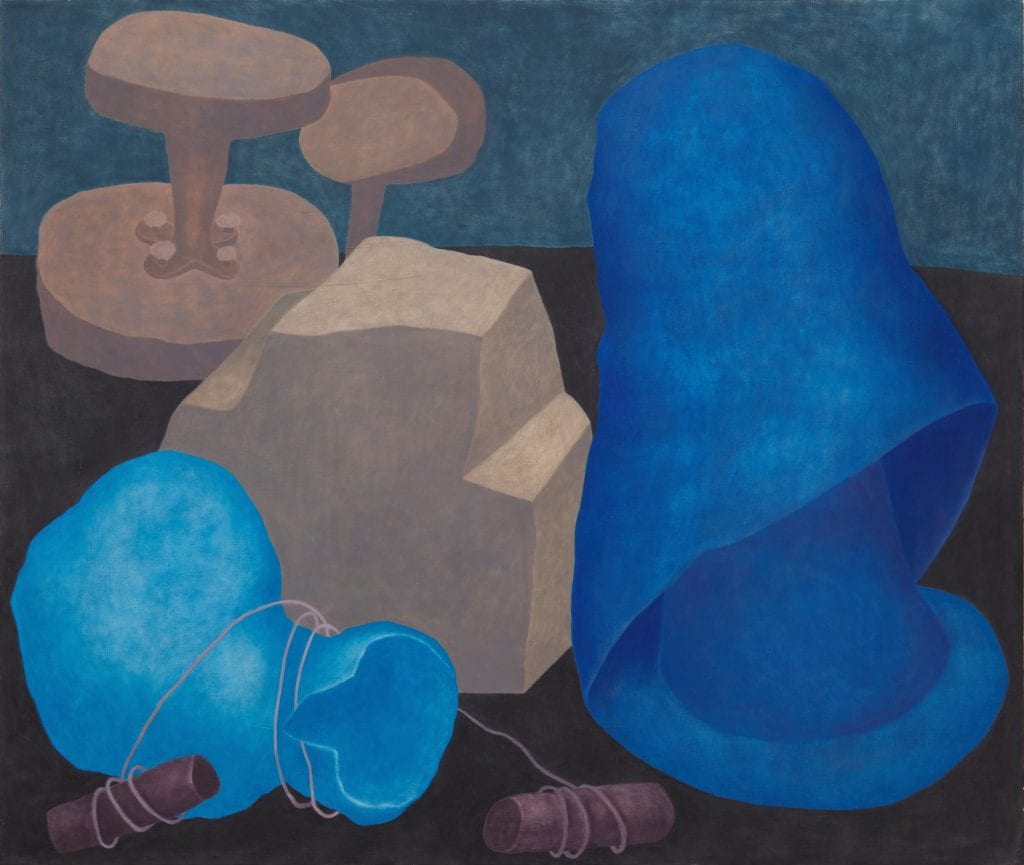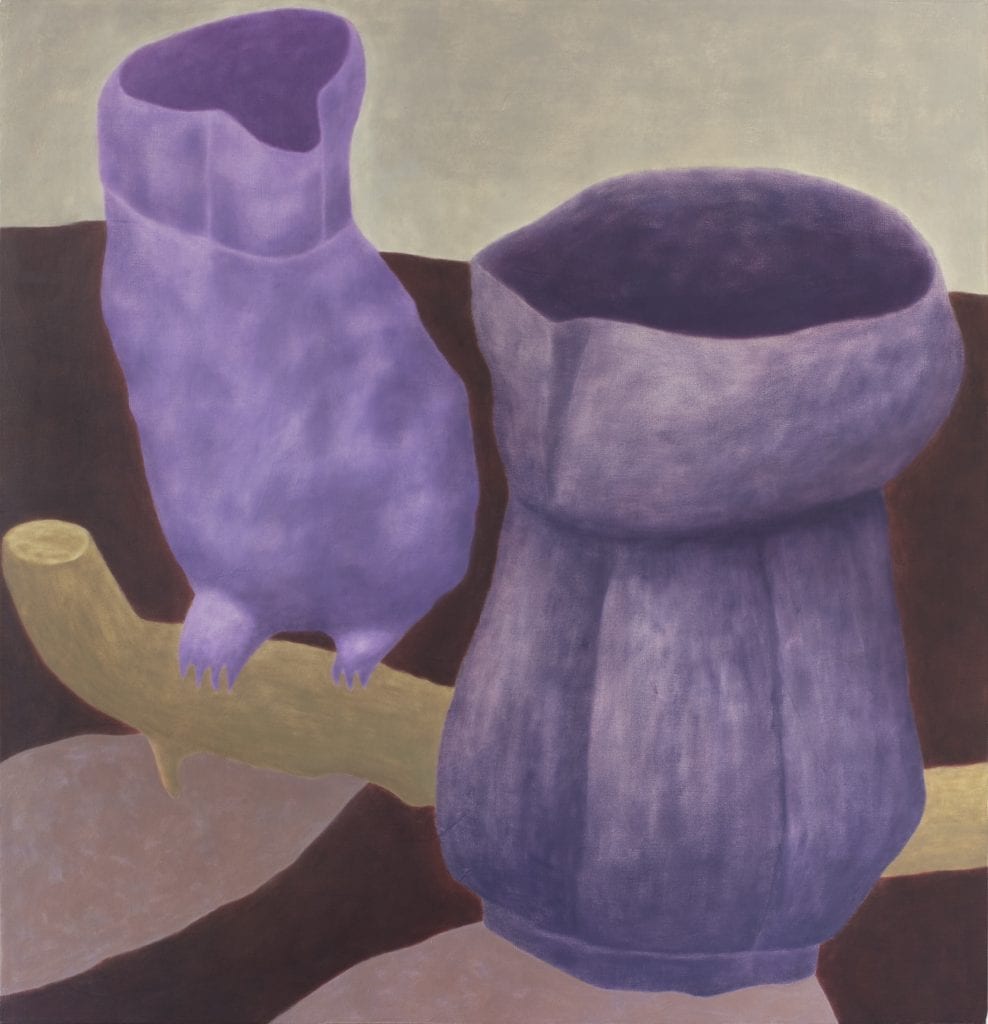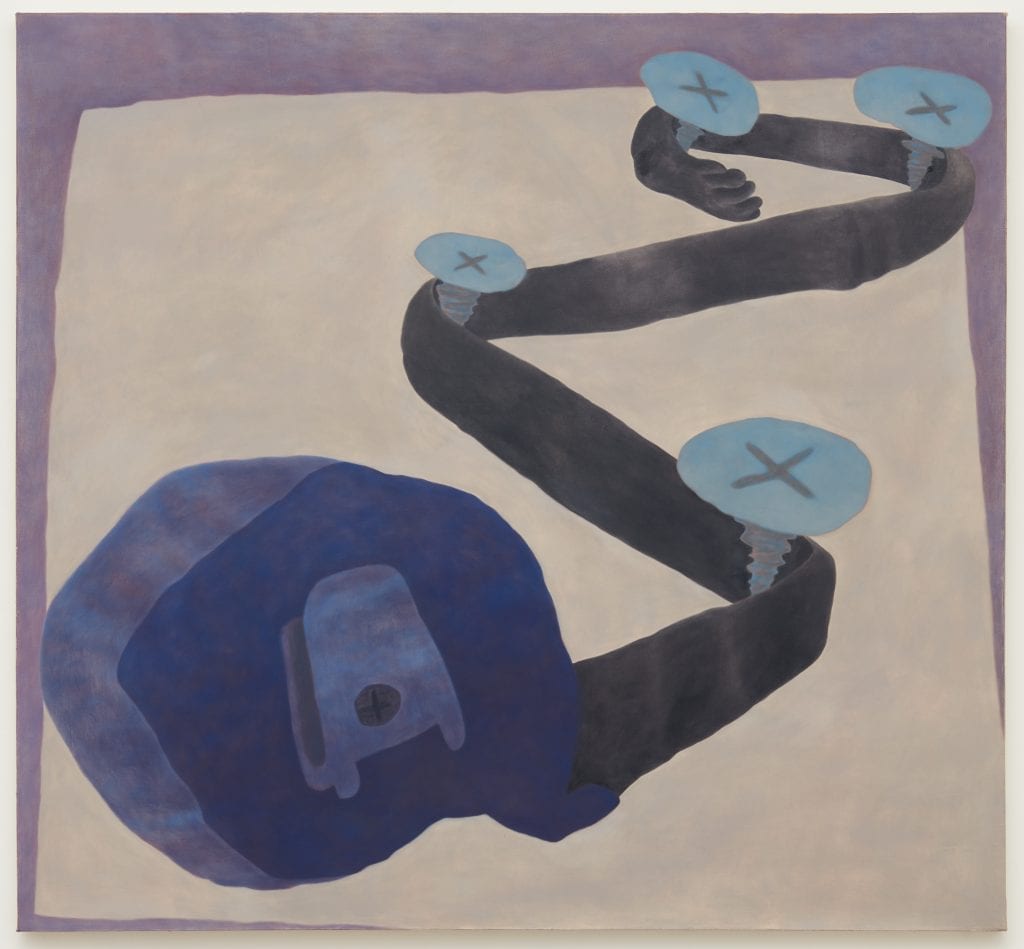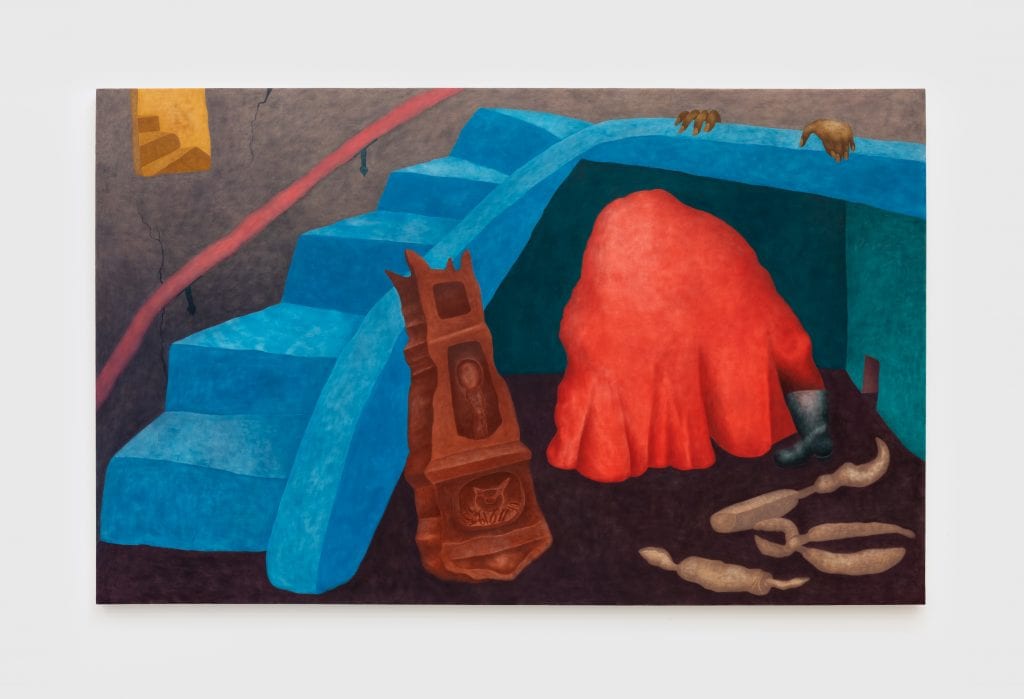Ginny Casey paints worlds that combine natural and artificial aspects of life. The spaces that her works inhabit are invented and often have symbolic undertones. In Casey’s most recent body of work on view in her solo show Trap Door, now on view at Nino Mier Gallery, she introduces a sense of entrapment. Logic does not find home in Casey’s works, where viewers are invited to traverse the canvas and view familiar yet strange surroundings. Casey is based in Queens, NY.
You are part of a young generation of female artists hustling and gaining recognition in NYC. What does being a part of a strong female community mean for you?
I’m not someone who goes to many social gatherings, but I have a few female artist friends with whom I can honestly share with and that’s such a gift. In the past few years I’ve also connected with a community of moms, many of whom are artists. I love my kindred female friends and living in Bushwick makes community feel effortless, which is nice when you’re a little antisocial.
Which female artists, living or dead, inspire you most?
Louise Bourgeois, Gertrude Abercrombie, Lee Bontecou. #1 inspirations. All particularly themselves, all psychological and all not cute. I will never tire of them and my books of their work are well-worn.
Inka Essenhigh, Dana Schutz, Amy Sillman, Nicole Eisenman – painters I’ve loved and learned from, from the beginning of my time as a painter.
Kyle Staver, Katherine Bradford and Aubrey Levinthal- creators of luminous worlds.
Brenda Goodman and Julie Curtiss– true psychological explorers.
Have you experienced firsthand the underrepresentation of female artists in the art industry?
I feel thankful that I have not experienced this in the contemporary art world. For example at 106 Green, where I first showed in 2016, they showed more female than male artists. In the other galleries I’ve shown in since, the artists seemed equally divided.
Have you noticed a change in opportunities available for female artists since you first entered the art world?
I feel there is strong support for feminine energy in the art world I know.
If you could change one thing about the current landscape for working female artists what would it be?
More female-owned galleries.
What is your process like? How do you begin a painting?
I draw a lot before I start painting. I draw individual objects and then draw and redraw these in new combinations and compositions. I try to make each object as full of familiar personality as I can, creating conversations and narratives between the parts. Once I’ve figured out the drawing, I start on the color/paint side of things. This is usually the more luxurious part of my process.
Are the spaces that your works inhabit based on reality?
The spaces are invented and more symbolic than descriptive.
What movements in Art History most inspire your work?
I’ve been rewatching classic Walt Disney cartoons with my daughter and realized how powerful and influential they have been for me. These were my exposure to surrealism, once removed, in the absurd, dream-like painted world of Fantasia, Alice in Wonderland, Donald Duck etc. I try to pull imagery from my subconscious and this early influence is deeply embedded in there.
Can you tell us about your exhibition at Nino Mier, Trap Door, which recently opened?
Painting continues to be strange and sacred to me. I try to tap into subconscious thoughts which can make it difficult for me to describe the work or point to a single meaning. However, I think what is consistent throughout this new group of paintings is a sense of entrapment. It’s something I’ve never consciously put words to and that’s probably why I’ve been drawn to exploring it visually. The spaces are more immersive than in my past work. There are more opportunities for the viewer to move between objects and also ways to escape the paintings, through exits that are either inviting or ominous.
